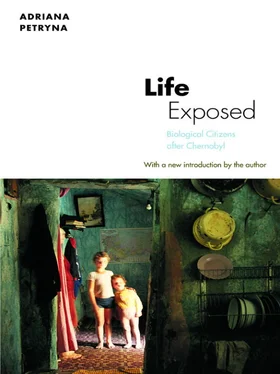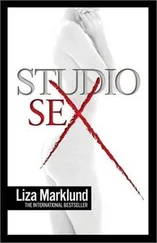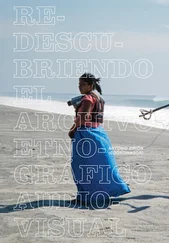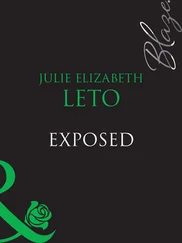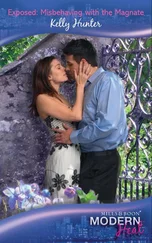This last point marks a pertinent shift: from a scientific knowledge that is accessible to a privileged few, to one that acknowledges a lack of closure and thus provides more people with a stake in its epistemological rules (Kohler 2001). That this science can be the sum of knowledge, ignorance, and imprecision becomes part of the plasticity of the biosocial experience I illustrate here, and what enables many sufferers to get a foothold in this world. The indeterminacy of scientific knowledge about the illnesses people face and about the nature of atomic catastrophe emerges here as both a curse and a point of leverage.
The word ignorance expresses how the Ukrainians depicted here saw and continue to see themselves within (and, more recently, how they are capable of manipulating) a hierarchy of knowledge and power. The flip side of ignorance is what I saw as the savvy comprehension among affected individuals of the shifting stakes, experiments, and technologies in the international life sciences that implicated them in, or excluded them from, an experimental knowledge process. This “bios” of Chernobyl becomes an unexpected yet highly versatile cultural and political resource.
• • •
Ivan Nimenko learned how to navigate these new times. He was moving up the social-welfare ranks from sufferer to disabled person. While working in the state militia in the first weeks following the accident, he was ordered to evacuate the residents of Prypiat’, a city of fifty thousand housing nuclear plant workers and their families, within thirty-six hours after the disaster. I met him in the Radiation Research Center. Once closed to foreigners, the center is a highly charged bureaucratic and clinical institution in which workers’ occupational injury claims are made and stamped as authentic. Nimenko, like any prospective disabled person, sought the Chernobyl “tie.” As he put it, “This is the document I need for my health.” The “tie” would assert that his illnesses are not “general” but rather are attributable to Chernobyl.
Nimenko was admitted to the center’s Division of Nervous Pathologies with a diagnosis that read “cerebral arteriosclerosis with arterial hypertension, osteochondrosis, gastritis, and hypochondriacal syndrome.” Such a complex of diagnoses was not uncommon and suggested that he might be merely a “psychosocial” case, and therefore ineligible for the benefits he sought. He needed to eliminate that possibility and replace it with an unconditional radiation-based etiology. Fundamental to this task was a radiation dose assessment that he had fought hard to get. Nimenko knew that according to international nuclear industry standards, a worker can incur up to 25 rem over his entire lifetime. He had incurred at least 25 rem in just ten years. Through a brother-in-law, a laboratory director, Nimenko had managed to enter the system, to be assigned a coveted hospital bed, and to receive a medical examination. He could count on familial connections, old Soviet, primarily urban-based, informal exchange networks, and the system of blat to establish his legal status in the new state. He was successful.
Like many others, Nimenko maintained that he was historically unaccounted for in the Soviet administration of the disaster. Referring to the lax radiation monitoring of Chernobyl workers, he said, “Regarding our individual cases, they wrote nothing. If there was any distinctive mark written about us in the registers, it read 0.0 ( nul’-nul ’), whatever the unit of measurement was.” In characterizing his dose exposure as nul’-nul’, Nimenko recognized himself as having gained no legal weight, no consequence or value, during his Chernobyl work. For Nimenko, this Soviet 0.0 symbolized false accountability. Even now, scientists involved in executing the Soviet state’s disaster response maintain that only 237 people with known doses are legitimate acute accident victims, and that only 31 of those died from the disaster. These kinds of squared-off facts defined the scope of the disaster’s consequences and foreclosed compensations to many like Nimenko, whose injuries might not become evident until later. Nimenko knew these numbers by heart.
A 1991 British television documentary shows the grueling labor Soviet administrators demanded of the workers sent to Chernobyl. The documentary describes a particular cleanup effort that took place in September 1986, four months after the initial explosion. Soviet administrators were intent on restarting Unit Three of the power plant, adjacent to the exploded unit. But debris from Unit Four covered the third unit’s roof, delaying start-up. Initially robots were deployed to remove the roof’s radioactive debris; radiation levels were so high that the electronics powering these robots failed. A month later young men, their bodies covered with primitive lead suits, rubber gloves, and thin cloth face masks, were conscripted to complete the job.
In one segment of the documentary, workers who are about to go up onto the roof are shown scenes from a video monitor posted on the roof of the third unit. “This is how your mates do the work,” the work unit commander says. The workers are instructed to be on the roof for no more than one minute. They are told that within that time frame they must shovel radioactive debris and hurl it over the parapet into containers below. They are to repeat the process once more, and then run for their life.
At the end of the segment, a representative from a group of disabled persons is interviewed. He refers to these men as the original “bio-robots.” The label suggests that Soviet administrators exploited workers’ biology as a resource to contain the disaster. In the representative’s own words, biological resources were “to be used and thrown out.” According to one biochemist, many of these bio-robots were exposed to six to eight times the lethal dose of radiation, “They are alive,” he said; “they know that they didn’t die. But they don’t know how they survived.” This “ignorance” over how they survived does not stem from a lack of knowledge; it is a political consequence of decisions concerning how to approach what could and should be done to mitigate danger or disease (Proctor 1995:7). In the face of overwhelming danger, the state slated certain workers for bio-robotic death. Those who survived this political decision were abandoned to a gray zone of scientific and bureaucratic indeterminacy.
Approximately 50,000 of the 600,000 workers sent into the Zone over a ten-year period did work of this extreme nature. In the Ukrainian period of disaster administration, this experience was taken up as an emblem of the deadly effects of the Soviet response to the accident, and, more, it opened the possibility of a new politics which took that very injury as legal material. This process became part of the social history of an emerging postsocialist personhood. In his essay on the subject, Marcel Mauss states that personhood is “more than an organizational fact, more than a name or a right to assume a ritual mask. It is a basic fact of law” (1985:14). Indeed, the law of scientific indeterminacy introduced by the disaster’s interventions allowed for new legal personhoods founded on incalculable harm.
New gender dynamics and domination were also at stake in this new legal and moral environment. In 1996, another representative from a fund told me the first words he spoke to his wife and son when he returned home from work: “Get away from me, I am contaminated!” Kulyk was a mere thirty-eight years old when I met him, but he looked at least sixty. He lay on a living room couch, a kind of centerpiece, surrounded by members of his fund. As he spoke, his wife, Tania, mocked her husband’s “stupid sense of duty.” She was left to take care of a deteriorating person, “He was a Party secretary, and now he is a skeleton. His stupid sense of duty is now killing everyone!” Tania explained that Kulyk had experienced all the signs of acute radiation sickness: “He frequently lost consciousness; he coughed and vomited blood…. He is alive, and that’s all I know. I don’t want to know what is inside his body.” Every village, every housing block, every work collective knew a living bio-robot—or one who had already died.
Читать дальше
